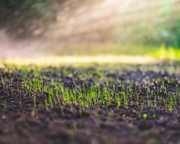Yates Account
Join now
Create a Yates account today!
Sign up to join the Yates Garden Club for monthly e-mails packed with seasonal inspiration, tips for success & exclusive promotions.
Plus if you’re a Garden Club member you can take part in the Yates Growing Community - a blog to share successes, get advice & win prizes in fun challenges along the way!

Forgot password
Enter the email address associated with your account, and we'll email you a new password.
Selective, hormonal weedkiller that controls broadleaf weeds in lawns without harming grass species. Yates Turfix Lawn Weed spray concentrate can be used on a regular basis in spring and/or autumn to help maintain your stunning weed-free lawns, best used when weeds and turf are growing vigorously.
Do not apply if rain is expected within a few hours and avoid treatment following long period of dry weather.
It is simple to use with a simple measuring tool on the side of the bottle. Simply dilute the appropriate amount of Turfix in water and apply evenly over your lawn.
To allow Yates Turfix to work it's magic, avoid mowing for 7 days after treatment. Types of weeds controlled include daisies, clovers, catsear, chickweed, chamomile, docks, thistles, dandelion and Onehunga Weed.
Features
- Treats 154 square metres of lawn
- Three way formulation
- Controls broadleaf weeds without harming grass species
- Controls daisies, clovers, Onehunga weed, catsear, chickweed, chamomiles, docks, thistles and dandelion
Directions for use
Mix 65ml of Yates Turfix Lawn Weed Spray in 5 litres of water and spray onto 50 square metres of lawn. Apply evenly over the measured area. For new lawns (less than 6 months old), mix 50ml in 5 litres of water and apply to 50 square metres. Correct coverage and water rate is essential. Ensure that 5 litres of water is applied to 50 square metres of lawn. Apply in spring and autumn when weeds and turf are growing vigorously.
DO NOT apply if rain is expected within a few hours. Avoid treatment following long periods of dry weather. Yates Turfix Lawn Weed Spray kills weeds slowly. Effects may take 3-4 weeks to appear.
After application
Flush equipment thoroughly with clean water. Dispose of surplus spray and washings away from garden plants. It is advisable to use a separate sprayer for fungicides and insecticides.
DO NOT mow lawn for 7 days after treatment.
DO NOT use treated grass clippings to mulch plants.
DO NOT use on lawns less than 3 months old.
NOTE: Kikuyu, Dichondra, Couch and Buffalo lawns may be injured by treatment.
| Size |
200ml, 500ml, 1L |
| Ingredients |
Contains 200g/litre mecoprop, 50g/litre MCPA, and 6.2g/litre dicamba as the dimethylamine salts in the form of a soluble concentrate. |
WARNING: This material is corrosive and may cause severe eye irritation and eye damage. May be harmful if swallowed, inhaled or absorbed through the skin. May cause kidney and liver damage if taken orally at repeated high doses. Very toxic to the soil environment. Toxic to aquatic life. May harm mammals and birds.
PRECAUTIONS: Keep out of reach of children and pets. Avoid contact with eyes and skin and inhalation of spray mist. Wear protective gloves and eye protection when mixing or using. Use product in well ventilated areas. Wash hands and exposed skin thoroughly after use. DO NOT contaminate any water supply or fishponds with product or empty container. DO NOT spray over, or allow to drift over an aquatic environment. This material is very damaging to grapes, tomatoes and other sensitive crops. DO NOT allow spray to drift onto desirable plants or outside the target area.
FIRST AID: If swallowed do NOT induce vomiting. For advice contact the national poisons centre 0800 764 766 or a doctor immediately. If skin or hair contact occurs, remove contaminated clothing and flush skin and hair with running water. If splashed into eyes, wash out immediately with water for at least 15 minutes and seek medical attention.
FOR EMERGENCIES ONLY CALL 0800 734 607 (24 HOURS)
























Share
Share this product on social media